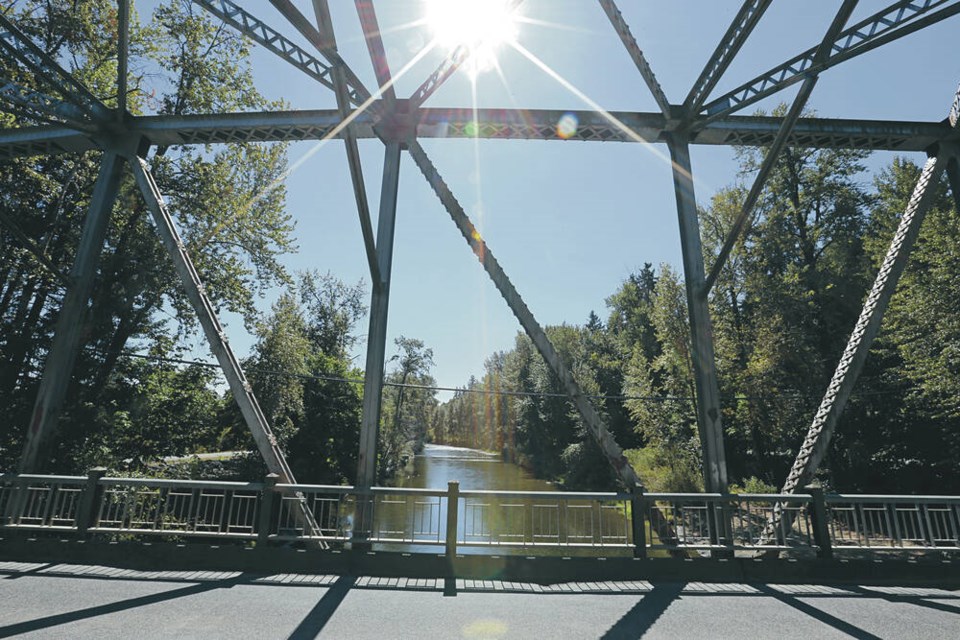This story is part of a series exploring the wide-ranging impacts of persistent drought conditions and climate change seen across the province in recent years.
After a significant drought last year coupled with devastating wildfires in much of B.C., there is a close watch on conditions now that summer is underway.
The signs of drought the province is seeing now started almost exactly two years ago in 2022, said Jonathan Boyd of the B.C. River Forecast Centre.
“For us who work with drought, we thought that 2022 was going to be kind of a breeze,” he said.
That was because of rainfall and relatively cool temperatures through much of spring and up to the start of July — but virtually no rain fell after that for the rest of the summer.
“The Victoria-Gonzales weather station actually recorded the longest streak of zero precipitation ever of all the stations in Canada,” Boyd said. “That pushed us into a really challenging situation.”
Then in 2023, a streak of “incredible hot weather” in May and the first part of June quickly melted the snow pack, which contributes to the water supply, Boyd said.
“It pushed rivers to peak early and then rapidly decline.”
He said the 2023 drought that followed was the most serious that has been experienced across B.C., raising concerns about what 2024 would bring.
“This year, of course, there has been so much media attention right from the first snow bulletin that was issued on Jan. 1 about how low the snow pack was provincewide,” Boyd said.
Vancouver Island University geography professor Alan Gilchrist said a common point of view is that “drought is the new normal.”
“It’s definitely more on the radar for the average person, as well as the water managers out there.”
Global climate change is clearly a part of that, Gilchrist said, as is population growth creating more need for water.
Boyd said there was a positive weather pattern this spring in terms of curtailing drought, with little sustained heat.
In Victoria, for example “there’s just been so few of those really, really hot days,” he said.
“Through much of the province, we’re a little bit better than we were at this point last year,” Boyd said. “If we had the spring weather that we had last year this year, we’d be in a terrible situation across the whole province.”
On eastern Vancouver Island, the drought level at this time in 2023 was four — with five being the worst — but this year it is at two.
But 2024 “certainly isn’t a great year” in terms avoiding negative impacts from drought, Boyd said.
Right now, lower flow in some rivers after limited rain in recent weeks is starting to contribute to them warming up, he said, which can affect fish populations “and other aquatic ecosystems.”
“There will still be challenges,” Boyd said. “Vancouver Island always has challenges once we get into August and September, until we eventually get those atmospheric-river events.”
Rivers tend to recover fairly quickly once it rains, said Gilchrist, who researches the dynamics of water flow and water management.
He said watersheds on Vancouver Island are relatively small in comparison with those in other parts of the province, which makes them susceptible to feeling the effects of drought more quickly.
“The thing is that we have many users on a single river system,” he said. “For example, on a river like the Koksilah on the southern part of the Island in the Cowichan Valley, you have a number of farmers and rural residences that have wells that are drawing water out of the aquifer there, but you also have the fish within the river itself.”
There are also agricultural needs, he said.
“If we get into drought conditions then you start basically getting these competing uses.”
Last year, water-level concerns led to the province issuing fish-protection orders in August for the Koksilah River, the Cowichan River and the Tsolum River near Courtenay to control human water use.
With the Koksilah, steelhead trout populations were threatened, leading to restrictions that included not using water for forage crops or industrial purposes.
On the Cowichan, warm temperatures led to an algal bloom in the river’s upper reaches that caused considerable fish deaths, resulting in the added measure of extending fishing closure from Sept. 1 to Nov. 15.
Boyd said the hope is that extreme heat doesn’t show up in the next few months “and we don’t necessarily get into those dramatic low river levels like last year.”
Some fish species have adapted to drought situations, he said.
“We’ve seen that from the past few years when the drought extended into October,” Boyd said. “A lot of the spawning salmon just kind of waited until the rain actually arrived and there were flows in the rivers before they came up to spawn.”




